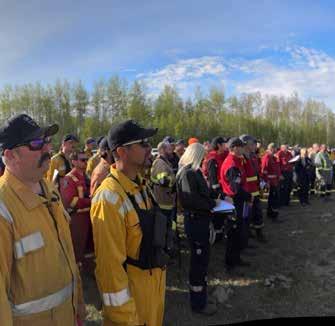
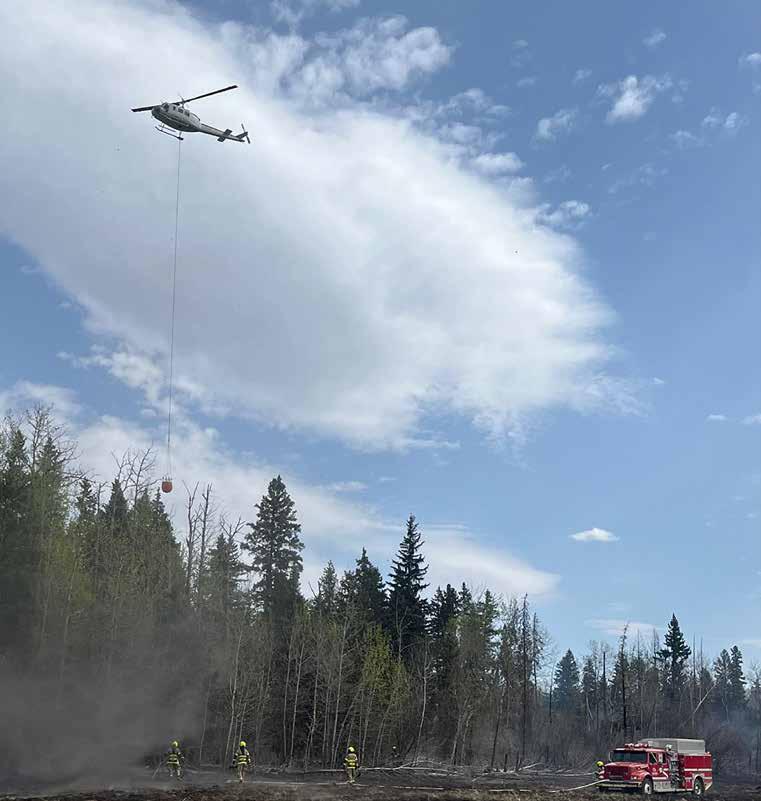
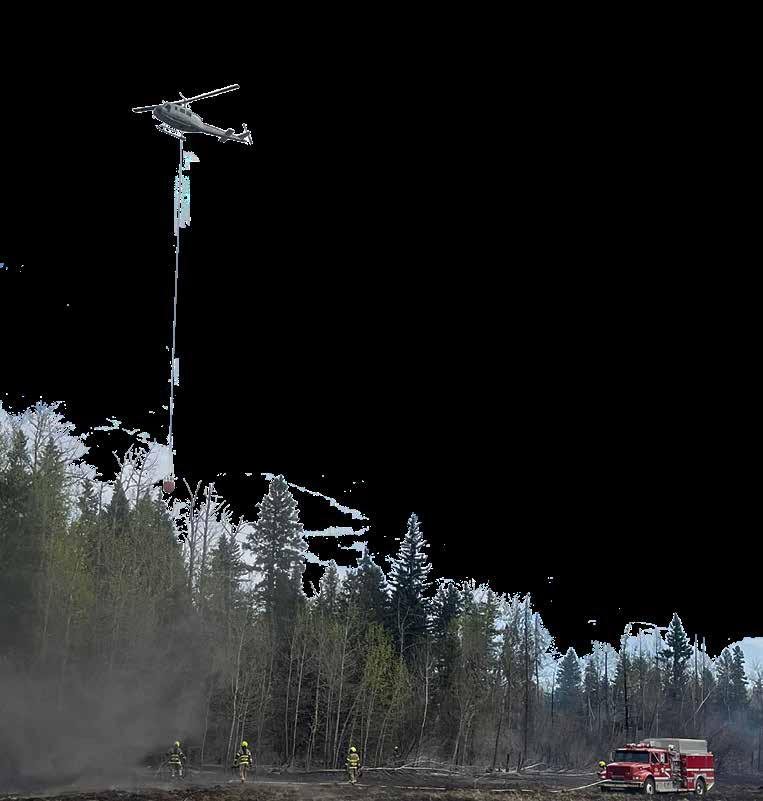
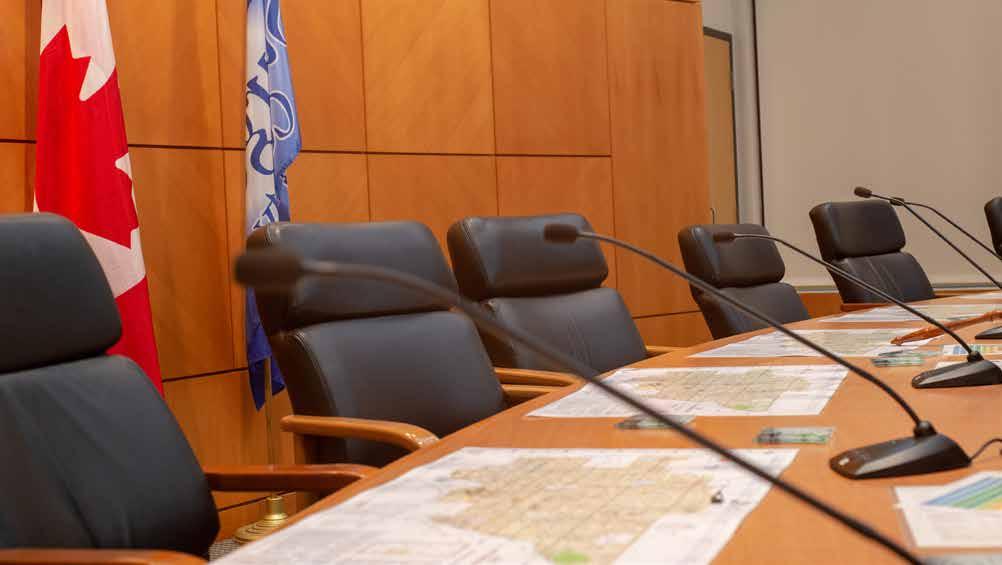





The upcoming 2025 municipal election on October 20 marks an opportunity for interested candidates to become involved in directing the future of Sturgeon County. Working as a council member in municipal government is both rewarding and challenging. The role requires wearing many hats—balancing community needs, addressing local concerns, and making decisions that will help define the County’s path forward over the next four years.
Sturgeon County is divided into six divisions, each represented by one elected councillor. Sturgeon County’s mayor is elected at large, which means that each resident votes for both their division councillor and the mayor on their ballot.
Becoming an elected official allows council members to make decisions that impact the dayto-day lives of county residents; at the municipal level, councillors often have a more direct and immediate connection with residents than representatives in other levels of government. Whether it’s discussing zoning bylaws, budgeting for community projects, or responding to residents’ needs, there’s a sense of connection to the people and places they serve.
Before becoming a council member, interested parties must first become candidates. To declare candidacy, interested parties must fill out a package of information, including a Nomination Paper and Candidate’s Acceptance form, Candidate Financial Information form, Notice of Intent to Run form, and the Candidate Information Disclosure form.
All the information needed to embark on this journey can be found on the Sturgeon County website at sturgeoncounty.ca/election or by scanning the QR code below. Under the Government and Engagement section of the County’s website are resources needed to become a candidate in the fall municipal election, including the Prospective Candidate Handbook.
Make sure your voice is heard in choosing who represents your community. Mark your calendar— Municipal Election Day is Monday, October 20, 2025. Voting stations will be open from 9:00 AM to 8:00 PM. If you can’t make it on Election Day, advance voting and special ballot options will be available to give residents the chance to vote early.
To be eligible to run as a municipal council member, you need to be at least 18 years old, a Canadian citizen, and a resident of Sturgeon County on Election Day. For the 2025 Municipal Election, eligible voters must now register to vote. To register or to confirm your details, visit voterlink.ab.ca. When you go to vote, make sure to bring a government-issued photo ID as it is the primary method of proving your identity and residency.
Your vote is your voice, so make it count!

FIND OUT MORE ABOUT THE 2025 MUNICIPAL ELECTION BY SCANNING THE QR CODE.


MESSAGE FROM MAYOR ALANNA HNATIW
587-987-2907
ahnatiw@sturgeoncounty.ca
It took a herculean and collective effort to get the 3,200-hectare Redwater Recreation area fire under control this spring. I, like many of our residents, am so grateful not only to our Sturgeon County firefighters and enforcement services, but also those in our Sturgeon Regional Emergency Management Partnership, including Morinville, Gibbons, Redwater, Bon Accord and Legal. Many other neighbouring municipalities and partners, along with Alberta Wildfire, helped us in our time of need, demonstrating the power of the working together. This incident clearly demonstrated the importance of Sturgeon County partnerships in a strong coalition of committed allies to protect the things that matter most to our community.
I was recently honoured to be one of ten Canadian mayors invited to attend the United States Conference of Mayors’ Trilateral Trade Summit in April. Our Canadian delegation presented a united front with American and Mexican counterparts against potential tariffs imposed by the U.S. administration, and to urge against any further threats that would
negatively affect communities in all three countries.
As one of the only rural representatives in the delegation, I shared what tariffs mean for Sturgeon County, the broader Edmonton region, and Alberta. Whether it’s oil & gas, manufacturing, seed crops or beef production, tariffs will drive up our cost of living for food, fuel, and shelter.
Cooperation is also needed closer to home now that the Edmonton Metropolitan Regional Board (EMRB) has wound down its operations. We have an opportunity to reframe regional collaboration in a way that highlights Sturgeon County’s strengths. We will continue to work in collaboration with the 16 municipalities that border the County to make smart planning decisions that align with our region’s goals and needs. Sturgeon County has strong intermunicipal collaborative frameworks in place with surrounding municipalities and we intend to keep our neighbourly relations productive and positive. As the fire taught us, we can do more together than we can do apart.
MESSAGE FROM DIVISION 1 COUNCILLOR
DAN DEROUIN
587-986-1431
dderouin@sturgeoncounty.ca

Country Living Expo has wrapped up for another year — and what a memorable experience it was! As the Division 1 Councillor and a long-time resident, I left the event feeling not only impressed, but deeply proud of how far Sturgeon County has come in creating meaningful, engaging opportunities for the community.
One of the most inspiring elements during my time on Council has been seeing agriculture — the heart of our County — continue to thrive while also evolving to highlight a wide range of interests. Other engagement initiatives, like Coffee with a Cop, County Bounty, and Transportation Project Information Sessions are all designed to keep residents informed, involved, and connected. With all these resources easily found on the County website, it’s clear that accessibility and open communication are our priorities.
But what really makes Sturgeon County special is the

With summer finally upon us, many homeowners are doing their yearly summer cleanout, and with that always comes the inevitable question of what to do with the stuff you’ve accumulated over time. As Chair for the Edmonton Regional Waste Advisory Committee, I am deeply aware how the simple task of waste removal can play an important part in our quality of life.
people—our volunteers, residents, and County staff. We are incredibly fortunate to have highly motivated Sturgeon team who take great pride in planning and delivering exceptional experiences. Whether it’s a hands-on educational activity or a large-scale event like the Expo, it’s the care and attention from our staff that make each initiative a success.
This year, my family celebrates 128 years of County life. That legacy gives me a deep appreciation for where we’ve come from — and tremendous pride in where we’re going.
Collaboration, creativity, and passion are what make this County not just functional, but thriving. It’s a place where people work together — across departments and with residents — to make Sturgeon a truly wonderful place to live and work. I’ve never felt more connected to or hopeful about our community than I do today.
MESSAGE FROM DIVISION 2 COUNCILLOR KRISTIN TOMS
587-879-0208
ktoms@sturgeoncounty.ca

780-974-4713
mmclennan@sturgeoncounty.ca
Currently, Sturgeon County does not provide waste collection services, and residents are responsible for managing their own waste pick up and disposal. To accomplish this, curbside collection subscriptions can be arranged by residents on their own and/or waste can be taken directly to the Roseridge Transfer Station (each household has an allowance of 8,000 kg per year). Our council recognizes that as our community continues to grow, our collective needs change, and as such, the County is undertaking a review of its waste services.
Our council approved a service elevation for waste management as part of the County’s 2025 budget. A Sturgeon County Waste Strategy is currently under development. Council has asked administration to look at how to best service county residents, and to provide options including curbside collection routing, transfer stations sites, waste stream management opportunities, etc.
Coinciding with this work is the welcomed implementation of the province’s Extended Producer Responsibility (ERP) strategy, which makes companies manage the cost for recycling their products and packaging, rather than municipalities and taxpayers. Every effort made to address the issue of waste management drives progress and a more sustainable future for all.
We are excited to see what the next iteration of waste management will look like in Sturgeon County. I encourage you to stay tuned for more information as this project develops, including opportunities for you to have your say in our waste management future.
I wish to congratulate Villeneuve for reaching a significant milestone this April, celebrating 125 years as a hamlet! Special appreciation is given to the many non-profit groups that are active in this area—the Athletic Association, the Voice of Villeneuve, the Villeneuve Seniors Happy Sixties Club, St Peter’s Catholic Church, and West Country Hearth. Collectives like these have made invaluable contributions to building Villeneuve and will continue to play a significant role in its future. May the community continue to thrive and build on its proud heritage for generations to come.
I’ve had the pleasure over the past few months of attending a number of events as Sturgeon County’s elected representative for Division 3.
In March, I, along with Coun. Comeau and Mayor Hnatiw, presented information at a Community Roundtable event planned for residents of Division
3 and 4. Nearly 40 people attended this communitybuilding opportunity, where we discussed projects affecting the area. We had great conversations on a variety of topics ranging from drainage to information sharing on surrounding development projects.
Work continues on the Sandy Lake Wilderness Area Concept and Natural Area Management Plan to help guide the development of this site. In February, Council approved the execution of a Letter of Support for a proposed rewilding partnership with a non-profit organization, called Project Forest, and Pembina Pipeline Corporation to support land conservation, restore native vegetation, and balance ecological and cultural priorities in the Sandy Lake Wilderness area. If it goes through, this project will promote naturalization through reforesting, which is a big win for the local environment and for county residents.
MESSAGE FROM DIVISION 4
587-986-5035
ncomeau@sturgeoncounty.ca

Agriculture, an industry under immense pressure, is the backbone of Sturgeon County. Producers are currently caught in a perfect storm of newly imposed Chinese and American tariffs. This situation is leaving many farmers in a precarious predicament as they have already planned their spring seeding and livestock purchases for a very different market than they are selling to.
As the Rural Forum Chair of the Canadian Federation of Municipalities, I recently travelled twice to Washington, D.C.—once for project work and once for the National Association of Counties conference to discuss what affects U.S. tariffs will do to Canadian rural communities. In these discussions, it was acknowledged that our American rural counterparts will also be greatly affected.
Canada is the number one trading partner to many of the U.S. states and they will feel the effects of these

587-879-5797
dstang@sturgeoncounty.ca
Over the span of three months, Sturgeon County has collected hundreds of survey responses and held four priority-setting meetings across the county related to community safety. The results helped inform three policing priorities for 2025: crime reduction in property and drug-related crime; police visibility; and public awareness and communication.
To address crime reduction, the Morinville, Redwater, and Fort Saskatchewan RCMP detachments that serve our county have committed to focus on proactive measures to combat theft, vandalism, and drugrelated crimes in remote areas. This could include targeted enforcement strategies, citizen collaboration, and leveraging technology such as surveillance tools, data analytics, and intelligence-led policing to allocate resources effectively.
The RCMP have also committed to increasing regular patrols and implementing strategic deployment for

jberry@sturgeoncounty.ca
This spring, our division suffered great loss as a result of the Redwater Recreation Area Fire. Our County is dedicated to helping affected families understand the next steps in the aftermath of this tragic event, and we know not everything that was consumed by the fire can be replaced. Some residents lost their homes, many suffered property damage and lost livestock, some lost their means of employment, and we all lost land in a beloved recreational area. We remain committed to helping residents and the community, and to doing what we can to prevent a fire of this magnitude from happening again.
The Redwater Provincial Recreation Area remains closed indefinitely. Over the next few months, we’ll be doing a review of the County’s fire response to understand what lesson we learned during this event, and how we can implement improvements when responding to future emergencies. Fire prevention is a shared responsibility, and we urge residents to implement the safety tips we have on our website, found at sturgeoncounty.ca/fire-prevention, to protect your home from fires.
tariffs. For example, farmers will feel the pinch when fueling farming equipment and purchasing potash, which they need to promote plant growth, increase crop yields, and enhance disease resistance. We, in Canada, have some leverage in this trade war and it is critical to ensure that we make our southern neighbours aware of the impacts they will feel if/when tariffs take effect.
As this situation continues to unfold, our efforts should also be spent working out interprovincial trade agreements and reducing artificial trade barriers between our provincial borders. Working closely with our provincial and federal counterparts to open new markets domestically, to mitigate the uncertainty of the international trade markets, is essential. Sturgeon County continues to monitor this situation closely and advocate on behalf of our community.
areas with higher reported concerns. Community engagement, including education programs and participation in community events, will also be used to build trust and understanding with the public.
Lastly, sharing of information with the public will be prioritized by providing crime and incident reporting updates and opportunities for the public to have conversations with officers through events like ‘Coffee with a Cop.’ This helps familiarize residents with available crime prevention programs and reporting options available to them.
County council recently supported a new permanent role within the organization, called a Safe Communities Facilitator, to bridge the gap between law enforcement, local agencies, and residents. Through this work, and by collaborating together, we can collectively take steps to improve the safety of our community.
Intersection safety is another ongoing priority for Council. While we continue to collaborate and advocate with the Government of Alberta for long-term solutions, we’ve also taken local action to enhance safety in high-traffic areas. Notably, solar-powered, LED-enhanced STOP signs have been installed at two key intersections: Highway 38 and Heartland Drive, and Heartland Drive and Opal Road. We have also installed an LED-enhanced STOP signage at the Highway 28 and Opal Road intersection. These upgrades are part of our proactive approach to improving road safety for all users.
As part of the proposed Cando Rail expansion, the developer is planning the closure of Range Road 222 between Township Road 560 and 555. To maintain connectivity, a bypass road on Range Road 223 will be constructed in advance of this closure, linking Township 560 to 555. This work will also include building a new mile of road along Township 555 to connect Range Road 223 back to 222.
As we head into the hotter months, I hope everyone has a chance to enjoy our wonderful county, and have a safe and healthy summer.

The recent Redwater Recreation Area wildfire put a spotlight on emergency response and firefighting in the County. It was an intense incident that required around the clock effort from over 758 people from all over the region, including many first responders, who worked collaboratively and effectively to ensure no lives were lost and damage to the park and private property was as limited as possible.
With wildfire seasons increasing in length and intensity, having a strong firefighting team is more important than ever. So, what does it take to become a firefighter? We sat down with four County firefighters to learn more about what fueled their desire to join Emergency Services.
Norm Quilichini has been with the team for nearly three years. He sums up his reason for joining without hesitancy: “I wanted to make a difference and have a chance to serve the community I’ve resided in for the past 20 years.”
This passion for helping others is a common thread among members, as Jared Gilbeau attests to. “I decided to be a firefighter for a few reasons, the main one being my drive to help others, which I’m sure is a shared feeling among all members.” Jared is six years into his

firefighting experience and says the part he likes most about this work is “the uncertainty of each day in this job, as well as the family and team dynamic it brings.”
Norm agrees. “There is an overwhelming team culture and comradery. Everyone looks out for each other and this creates a responsive, collaborative and safe team environment.”
He’s loved every minute of his experience as a firefighter and points out that, “it requires true dedication, support from family and friends, perseverance and a lot of hard work, but the opportunities within the program are endless, with excellent supports.”
In case you’re looking for that final push to convince you to apply, Samantha suggests you, “stop by any of the firehalls within Sturgeon County, look at the trucks, equipment, talk to the firefighters, hear stories. Being a paid on-call firefighter is very rewarding. Put the application in and give it a go!”
As Owan puts it, “If you want to serve your community, if you like helping people, then firefighting is the way to go. On someone’s worst day, you can be there to help them get through it—there’s nothing more rewarding than that.”

For Samantha Mahoney, who’s been with Emergency Services since September 2023, joining the team was a no-brainer. “Taking part in Sturgeon County’s Fire Cadets program years ago gave me a sneak peek into what being a firefighter is all about. Ever since then, I knew I wanted to become one.” Owan Cowan is in his third year of firefighting. For him, although the job can be challenging both physically and mentally, the rewards far outweigh the challenges. “There’s peer support available to help get you through those tough calls. It’s truly a team effort, helping the community and supporting each other.”
Find out more about firefighter recruitment by scanning the QR code. Recruitment for paid on-call firefighters will open on August 4 and details will be added to this webpage closer to that date.


Property tax notices were sent to Sturgeon County residents in early May. The deadline for payment was Monday, June 30.
Thanks to responsible fiscal management and long-term planning, the County was able to maintain the municipal tax rate portion of property taxes at its current rate, which means there was no increase to the rate for this year. This decision was made by County Council to help offset the increase to the provincial portion of property taxes and limit the additional tax burden on residents.
Most of the property taxes residents pay go towards funding services provided by the County. However, a portion of those taxes supports provincial services, such as education and seniors’ care. These taxes are collected by the County on behalf of the Government of Alberta. The County has no control over the amounts charged or how those amounts are distributed in the region. This year, the Government of Alberta significantly increased the Education Property Tax—by about 8%, on average, for Sturgeon County residents.
FOR MORE ON PROPERTY TAXES, SCAN THE QR CODE

There’s likely nobody more excited about the arrival of summer than our furry friends. Did you know Sturgeon County recently added two new designated off-leash dog areas? These spaces are located in Bellerose Park and Cardiff Park.
In recent months, you may have come across animal control officers in these spaces helping to ensure visitors are aware of the guidelines they need to follow so that County dog parks remain safe and fun for everyone. While offleash areas are a great way to socialize your dog and enjoy the County’s green spaces,
there are a few dog park rules you need to keep in mind:
> Pick-up after your dog
> Ensure your dog is properly licenced
> Always keep your dog under control
> Owners are legally responsible for their dog’s behaviour
> Vicious dogs are not allowed
> Within these designated spaces, your dog is free to run, roll over and meet new friends. Each dog park is surrounded by

fencing, and the spaces include benches, trash cans and bags for picking up after your pet
> Remember, while Cardiff and Bellerose parks each have a designated off-leash area, dogs must remain on a leash in all other parts of these parks, as well as throughout County subdivisions and hamlets
By following these simple guidelines, you are helping ensure our community’s dog parks are safe for everyone to enjoy.
FOR MORE ON DOG PARKS, SCAN THE QR CODE

Sturgeon County has joined forces with regional partners on a mobile hydrogen fuelling project. The County, along with the Government of Alberta, the Transition Accelerator (a non-profit organization focused on Canada achieving netzero), the University of Alberta, Alberta Motor Transport Association , Edmonton International Airport, Diesel Tech Industries, Azolla Hydrogen, and Strathcona County, have partnered to support the City of Edmonton’s Alberta Zero Emissions Fleet Fuelling (AZEFF) project.
The City of Edmonton will soon launch its first mobile hydrogen fueling station, providing clean energy for municipal heavy-duty fleet vehicles that operate on hydrogen fuel. These vehicles will include transit buses, Class 8 semi-trucks, and class 7-8 vocational vehicles from the City of Edmonton, Strathcona County, as well as Sturgeon County. The clean energy initiative is funded, in part, by Emissions Reduction Alberta (ERA) and shows local government and industry partners’ commitment to transitioning to a low-
carbon future by 2040.
Sturgeon County is pleased to participate in the AZEFF project as it provides a cost effective entry point into the hydrogen market for existing diesel-fuelled vehicles. The County plans to implement this technology into its fleet in the future on a blend of hydrogen and diesel that will contribute to reducing fleet emissions and provide valuable hydrogen experience that can be applied to the mobility, residential, and agriculture sectors in the future.
In addition to its involvement in the AZEFF project, Sturgeon County has recently joined the Canadian Hydrogen Alliance (CHA), strengthening its position as a regional leader in hydrogen development. Further underscoring this commitment, Mayor Alanna Hnatiw has been appointed to the executive of the Alberta Hydrogen Alliance (AHA), where she will play a key role in shaping the province’s hydrogen strategy.
The use of hydrogen fuel technology for municipal fleets in the Edmonton region could jumpstart wider adoption of hydrogen for heavy-duty vehicles operating nationally and beyond, and lead to economic growth in transportation, hydrogen development, and sustainable fuel industries in Alberta.
This project positions Sturgeon County as a leader in advancing hydrogen as a sustainable energy solution as part of our province’s clean energy transition. For more information on this and other initiatives, visit sturgeoncounty.ca/ business-investment/ clean-energy-ecosystem or scan the QR code.




Sturgeon County is committed to engaging with residents to understand what they view as priorities for their local RCMP detachment. To establish policing priorities for 2025, the County invited residents to share their input by attending a town hall and completing a survey.
Four town hall meetings were held throughout the County earlier this year— one for those serviced by the Redwater detachment, one for those serviced by the Fort Saskatchewan detachment and two for those in the Morinville detachment area. The town halls provided an important opportunity for RCMP representatives to engage in timely
dialogue with residents to gain insights on what is most important to them when it comes to public safety.
The survey, available in both paper and digital format, was completed by nearly 350 residents, further contributing to the perspectives gleaned from the in-person town halls.
The engagement process was well-received by the community and results helped establish key findings and themes that will guide the RCMP’s priorities over the upcoming year. The top recommendations, which were presented to, and accepted by,
County Council at the February 25, 2025, Council meeting include:
> crime reduction (property and drugrelated crimes)
> police visibility
> public awareness and communication
SCAN THE QR CODE TO READ THE FULL WHAT WE HEARD REPORT.


Anyone who has attended one of the many events arranged by Sturgeon County’s Protective Services department lately will likely have met the County’s Safe Communities Facilitator, Jennifer Penner.
The facilitator role was created as a pilot project in early 2024 to promote public safety and crime prevention at the community level. Based on the success of the pilot program’s outcomes, Council made the Safe Communities Facilitator role permanent.
Throughout the project’s pilot phase, Jennifer was able to make a significant impact through her work. Besides strengthening connections with law enforcement and community groups, a number of priorities were also advanced, including:
> engaging residents in shaping RCMP policing priorities through community outreach and a public safety priorities survey
> facilitating educational sessions to over 300 students on the dangers of distracted driving
> educating over 200 students on cyberbullying and online safety
> supporting internet child exploitation awareness sessions for parents and caregivers
> supporting emergency preparedness presentations for seniors
> introducing and promoting crime prevention programs for residents and business owners, such as Crime Prevention Through Environmental Design (CPTED)
> expanding monthly roaming ‘Coffee with a Cop’ events to hamlets within Sturgeon County to enhance community engagement with law enforcement
> It’s a demanding position that requires a lot of passion and dedication, but Jennifer is driven by the connections she’s able to make through her efforts

> “One of the most rewarding aspects of my role so far has been the relationships I’ve cultivated with various groups, agencies and individuals within Sturgeon County,” said Jennifer
Now, her focus is on the initiatives she’s eager to implement in the coming year. “Some upcoming projects I’m looking forward to are the Youth Emergency Services (YES) Academy, the Prevent Alcohol and Risk-Related Trauma in Youth (P.A.R.T.Y.) Program, and self-defense training opportunities for residents heading off to post-secondary education.”
Besides these youth-focused programs, Jennifer also has her sights set on:
> establishing new partnerships to reach as many seniors in the community as possible and empower them to maximize their safety
> expanding the department’s digital engagement to connect with a wide range of residents from different demographics
> growing a network with others in this field to bring new, innovative and effective crime prevention and public safety initiatives to Sturgeon County
> “The opportunity to enhance community safety through education has been a passion of mine and the foundation of my career path,” she said. “I can’t wait to see what we can do as a community to build on the progress we’ve made to date and enhance public safety and crime prevention even further.”
Sturgeon County is growing community connections, and we want YOU to be part of it
Whether you raise alpacas, run a non-profit, or organize youth and sports groups, we’re looking to connect with local producers, charities, and community associations interested in being more involved in County events and initiatives. There are many ways to get involved, from vendor opportunities at our seasonal celebrations to educational workshops, volunteer engagement, and charitable collaborations. Our goal is to showcase the incredible people and groups that make Sturgeon County vibrant, connected, and community-driven.
Let’s start the conversation.
If you or your organization would like to be part of future events, share your ideas, or explore collaboration opportunities, we’d love to hear from you.
Reach out to Sturgeon County’s Community Relations team for more information at CorporateComms@sturgeoncounty.ca
Let’s build something great together.

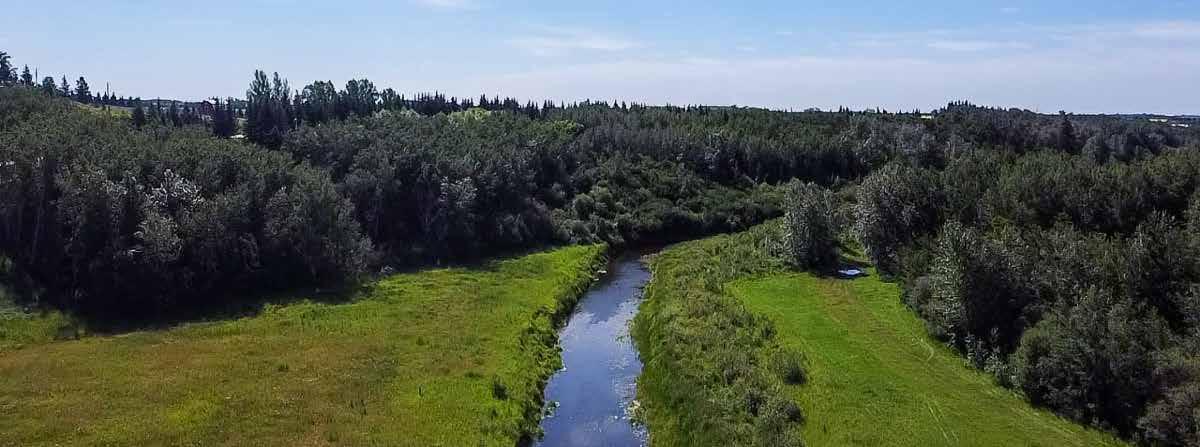
Sturgeon County recently completed an update to its Open Space Plan. The revised Open Space Plan guides how the County administers, protects and develops public parks, trails and natural areas. This update helps ensure current needs are met, while preparing for future growth.
What does “open space” mean?
Open space is publicly owned land in Sturgeon County that’s not used for farming or major development. The County maintains about 1,695 hectares of public open space, which includes:
> Parks and playgrounds
> Trails and sports fields
> Natural areas for wildlife and nature appreciation
What’s next?
What’s changed since 2016, the last time the plan was updated?
The updated plan reflects contemporary trends and leading practices for open space development and recreation management across Western Canada:
> People are more interested in passive recreation, like trails and nature walks
> There’s less focus on team sports, and more desire for flexible, lowmaintenance spaces
> Families are busier than ever, so quick, nearby recreation options are in demand
> There’s growing awareness of the importance of protecting natural areas
The plan will be updated again in the future to ensure it is regularly reviewed and effectively addresses current needs and future growth. As projects advance, there will be engagement opportunities for residents to share their input and suggestions.
The updated plan offers a framework that ensures Sturgeon County’s open spaces remain healthy, welcoming and enjoyable for everyone, now and into the future. This approach includes:
> A new classification system for open spaces, with three main categories (wild and natural areas, working landscapes and developed areas) and 16 types of open spaces (such as wetlands, grasslands, urban streetscapes, etc.)
> Fifteen recommended actions to help streamline open space planning and development
> A capital project scoring matrix to help prioritize future projects
> A focus on partnerships, environmental protection, and better planning for longterm growth
> Demonstration projects to test ideas in different types of spaces
FOR MORE ON THE COUNTY’S PARKS PROJECTS AND TO ACCESS THE OPEN SPACE PLAN, SCAN THIS QR CODE:

Sturgeon County is modernizing its Municipal Development Plan (MDP), the County’s long-term land use policy framework that is mandated under the province’s Municipal Government Act. While MDPs focus on land use, the Sturgeon County MDP also provides general guidance on social, cultural, environmental, economic and infrastructure considerations.
This summer, County administration will be updating the MDP with administrative refinements (and not substantive policy shifts), to ensure alignment with municipal priorities, improve clarity, and enhance ease of public use of the document.
Council held the first reading of the MDP bylaw 1681-25 on May 27, a public dropin information session at County Centre on June 16 and a public hearing on June 24. Interested parties are encouraged to follow the project along on our website at sturgeoncounty.ca.

In early May 2025, Sturgeon County faced a major incident—the likes of which the community hadn’t seen in over a decade. What started as a small, localized fire quickly became an out-of-control inferno, forcing nearby residents from their homes and requiring the County to declare a State of Local Emergency.
For weeks, emergency responders battled the growing and relentless blaze, which took 10 days to contain and 18 days to bring under control. In total, 3230 hectares of land in and around the Redwater Recreation Area burned, and many residents were deeply affected by this tragic event.
Sturgeon County is thankful to the many regional and provincial partners who assisted in the County’s emergency response, including but not limited to:
> Sturgeon Regional Emergency Management Partnership, including the towns of Morinville, Gibbons, Redwater, Bon Accord and Legal
> Sturgeon County firefighters and enforcement officers
> Alberta Wildfire firefighters and staff













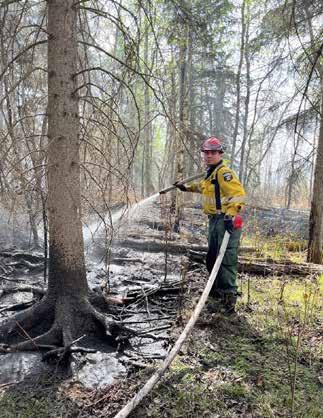
Sturgeon County has developed its first Agriculture Master Plan (AMP), a strategy that will guide the County in supporting its agricultural sector over the next ten years (2025-2034).
Agriculture accounts for the largest land use by area in Sturgeon County, and it’s the second largest contributor to our local and provincial economy. In 2024, recognizing agriculture’s vital role in the community and economy, the County set out to create a strategy to ensure that agriculture continues to thrive. Building that plan involved months of engagement including workshops, online surveys, and interviews with local farmers, agricultural experts, business leaders, and residents.
All input collected was reviewed and evaluated for trends or commonalities which helped create the new Agriculture Master Plan. The plan includes 29 actions with recommendations, which were grouped into five topic areas:
> Agricultural land
> Small/Speciality farms & value-added agriculture
> Infrastructure
> Agriculture and support services
> Community support & policy
Visit the Agriculture Master Plan by scanning the QR code to discover the actions recommended for each group listed above.




The Agriculture Master Plan (AMP) aims to tackle a broad range of issues identified through research, community feedback, and a review of challenges and opportunities. Actions and initiatives outlined in the plan are organized into five key topic areas, which include:
1. Agricultural Land. Our exceptional soils are integral to our agricultural success and the County aims to optimize these resources through effective land use planning. The County regulates land subdivision and uses, tax assessment, and manages many elements of infrastructure which impact agricultural land management and access. These recommended actions are intended to ensure agricultural land policy is data-driven and strikes a balance between maintaining flexibility and supporting long-term agricultural use within our landscape.
2. Small/Specialty Farms and Valueadded Agriculture. The County’s agricultural industry includes a wide range of primary production types of differing size and scale, along with many unique on-farm, value-added agriculture and agritourism enterprises, which are often referred to as ‘diversified agriculture’. Conventional policies, programs and services do not always effectively support the diversity in this industry. The recommended actions under this area are intended to ensure the County supports and collaborates with agricultural innovators to
respond with flexibility and fairness to diversified agricultural enterprises.
3. Infrastructure. Sturgeon County manages roadways, drainage paths, potable water access, and fibre optic internet, which are all vital for modern day ag development. For most types of infrastructure, the County is responsible for both investing in and maintaining these assets. In contrast, broadband internet is invested in by the County, but resident access is administered by a separate service provider. Infrastructure is critical for all forms of farming, and the consideration of changing agricultural needs is a critical aspect of effective service delivery. The AMP identifies actions for the County to pursue to deliver excellent, affordable, and safe infrastructure that considers the specific needs of the industry.
4. Agriculture and Support Services. The County provides a wide range of services to its residents from managing weeds, pests and waste to preventing crime and responding to fire and emergency incidents. Agricultural residents have specific needs for these services that are likely to evolve over time. The actions in this category are intended to ensure the County continues to provide services that are relevant, affordable and responsive to emerging agricultural conditions and trends.
5. Community and Policy. Many social, economic and environmental factors result in challenges and opportunities for our agricultural sector. The County has a role in mitigating landowner conflict, advocating to other levels of government on agricultural issues, and supporting other local agricultural priorities. The recommendations under this topic are intended to ensure the County fosters a community that is collaborative and supportive of agriculture, while also effectively advocating for local priorities identified by those involved in the agricultural sector.
For a detailed explanation of all the recommended actions in Sturgeon County’s Agriculture Master Plan, please scan the QR code

Sturgeon Composite High School students are flying high as their aviation dreams take flight. The high school in Namao recently implemented an innovative new program that provides students with real-life experience in aviation.
This Aviation – Flight 15 class aligns with Transport Canada’s standards, providing practical and theoretical knowledge students can apply to get their private pilot license. They also get the chance to use this knowledge in a flight simulator setting.
Back in 2024, students got to ride in a small aircraft for a Discovery Flight event at Villeneuve Airport. The airport has partnered with the program to give students this opportunity to fly – a first for many of the teens.
Sturgeon County Council is supportive of this endeavour. In January, Council directed the Mayor to provide a letter of support to the Sturgeon Public School Division as part of a grant funding application process in support of a Collegiate School application made by the Sturgeon School Division, which was recently approved by the Alberta Minister of Education and Childcare. This exciting initiative will offer students specialized pathways in aviation and skilled trades, equipping them with industryrelevant skills and knowledge to support future success in high-demand fields.
(Photos courtesy of Sturgeon Public Schools)




Sturgeon County is getting ready for another busy construction season investing more than $36 million into the County’s road network in 2025. From repaving key corridors to upgrading intersections, this funding will improve safety, extend the infrastructure’s lifespan, and advance connectivity.
2025 Capital Construction Highlights
18 kilometres of paving projects
> 18 kilometres of paving projects
> 2.4 kilometres of local road reconstruction projects
> 2 drainage projects
> 5 bridge projects
Here’s a look at some of the County’s bigger projects this year.
Lamoureux Drive
This project will rehabilitate Lamoureux Drive and improve the safety and functionality of the road and adjacent trail. This will provide a smoother, wider surface, and enhance resident access to Lamoureux Drive. The design and construction plan were updated based on feedback received from residents during public engagement in November 2024.
The project scope involves removing the existing road surface, strengthening the road base, resurfacing with new pavement and making drainage improvements. Every effort will be made to limit the impacts on trees and vegetation along the trail and road.
Range Road 223 between Boysdale Road & Lamoureux Drive
This section of the range road will be improved with a full asphalt rehabilitation treatment which will also eliminate the isolated oiled surface patches. That work will involve reconstructing and paving the existing road surfaces, replacement of select culverts, and roadside ditch cleaning as required.
Vista Road & Range Road 230
Road surfaces on Vista Road and Range Road 230 are nearing the end of their maintainable life span. Reconstruction will ensure a smoother, wider surface for safer travel and enhanced access for the Casa Vista subdivision and area residents.
Range Road 231 paving
1.3 kilometres of Range Road 231 from Gibbonslea to Lost Pointe Lake will be paved this summer. High traffic volumes and frequent stops at subdivision intersections and railway crossings make maintaining smooth rideability difficult.
This project will widen the road’s top, improve the ditch width and drainage, remove and replace select culverts and improve road safety and rideability.
Sturgeon Valley Estates rehab (Range Road 230 pavement preservation)
The County will be improving the road surface to an 8-metre paved surface. The overlay of the paved portion of Range Road 230 will be done at the same time as this project.
Township Road 554 paving Township Road 554 is a 12.5-kilometerlong standard gravel surface road that connects Highway 2 to Highway 44 in Sturgeon County. It is a heavily used gravel road for traffic between Riviere Qui Barre and Morinville.
This project includes subgrade, base, and paving a 3.2-kilometre stretch. It also involves widening the road surface, upgrading ditches, side slopes, and backslopes to meet County design standards. Road safety and ride quality will be improved, along with enhanced roadside drainage through the replacement of centreline and approach culverts.
To follow any or all of the 2025 road construction projects, visit sturgeoncounty.ca/roads-transportation/ construction or scan the QR code.



Over the next few months, selected residential areas across Sturgeon County will see regulatory signage upgrades at uncontrolled intersections. Regulatory signs include stop, yield, and speed limits. If you disregard them, it is considered a violation.
These enhancements mark Phase 1 of an important safety program, following a 2024 review and an assessment of previous Council decisions and resident inputs. The initiative aligns with County efforts to ensure consistent and safe transportation infrastructure throughout all communities.
Phase 1 focuses on nine subdivisions and hamlets as the start to this program, a second phase will follow to address remaining locations.
Installing STOP and YIELD signs at the identified intersections below will significantly reduce confusion about who has the right-of-way, making it clearer for drivers and improving traffic flow. This is expected to lower the risk of vehicle collisions, especially in residential areas where pedestrians, cyclists, and children may also be present. These upgrades are a key step toward creating safer, more predictable roads for everyone.
Current target areas include:
> Pro-North Industrial Park
> Calahoo
> Riviere Qui Barre
> Fairhaven East
> Silver Chief Estates
> Rosal Acres
> Alcomdale
> Dover Estates
> Pine Sands
Phase 2 is in the approval process and will cover selected subdivisions on the east side of the County, while Phase 1 focused on the west.

Sturgeon County residents may not know it, but sand and gravel operations are to thank for many local improvements in their community.
The County’s Community Aggregate Payment (CAP) Levy program requires sand and gravel operators to pay a small fee for every tonne of resource extracted. Fifty per cent of that fee is set aside for non-profit groups to access through Sturgeon County’s Community Capital Enhancement Grants Program.
Funds are available to support capital expenses including retrofits, renovations, and new equipment that provides recreational, social, and cultural programs and services to Sturgeon County residents. Check out the
application criteria by visiting sturgeoncounty. ca/community-safety/grants, or by scanning the QR code.
Over the past six years, the program has granted nearly $2 million for projects including improvements to Calahoo Arena, roof repairs at Villeneuve Community Hall, enhancements to local playgrounds, and upgrades to outdoor arenas.


Residents may notice that certain roads experience heavier truck traffic or that some gravel roads receive fully subsidized dust suppression while others do not. These differences are largely due to haul road designations.
Haul roads, or designated truck routes, are roads used by heavy trucks and equipment to transport materials such as gravel, soil, or construction supplies to and from worksites. These routes are carefully planned to minimize disruption to local traffic, reduce wear and tear on residential streets, and ensure safety for all road users.
Over the past six years, the program has granted nearly $2 million for projects including improvements to Calahoo Arena, roof repairs at Villeneuve Community Hall enhancements to local playgrounds, and upgrades to outdoor arenas.
Sturgeon County doesn’t have permanently designated haul roads, but its Transportation Master Plan does note that heavy vehicles moving through the County normally use the provincial highway network such as Highway 37 and Highway 28.
Sturgeon County Council manages impacts of hauling on roads and nearby residents through two main tools: Road Use Agreements and the Dust Suppression Program.
Road Use Agreements
When hauling operations require a Road Use Agreement (RUA), a designated “Haul Route” is established for that specific activity. Depending on the nature of the haul, these routes may be temporary (e.g., a short-term dirt haul lasting a few days) or semi-permanent (e.g., a multiyear haul from an oilfield battery). An RUA sets out requirements such as load limits, time-of-day operating restrictions, or mandatory vehicle tarping.
Within the County’s Dust Suppression Policy, “Heavy Use Haul Routes” refer to gravel roadways that experience high volumes of traffic. Based on County administration’s recommendation and Council’s approval, these roads may qualify for partial or full subsidies of dust control treatments to reduce the impact on nearby residents. While these
routes are also commonly referred to as “Haul Routes,” they are not linked to a specific commercial operation but are instead identified based on general traffic volume.
By monitoring haul roads and using tools like Road Use Agreements and the Dust Suppression Program, the County aims to balance the needs of industry with the safety, comfort, and quality of life for residents.


Roseridge Waste Management Services Commission is making it easier for residents to safely dispose of Hazardous Special Products (HSP) by accepting them year-round at both the Roseridge Waste Management Centre and Roseridge Transfer Station. This change became effective on April 1, 2025.
HSPs include common household products that can pose environmental or health risks if not disposed of properly. These items are typically labeled with Consumer Chemicals and Containers Regulations (CCCR) symbols, either an octagon or inverted triangle, and include:
> flammable liquids (e.g., gasoline, kerosene, BBQ lighter fluid)
> corrosive products (e.g., oven or grout cleaner, rust remover)
> toxic substances (e.g., household pesticides, tar remover, bug spray)
Unlike Household Hazardous Waste (HHW), which is only accepted at special Recycling Roundup events, these CCCRlabeled products can now be dropped off throughout the year.
By expanding access to proper disposal, Roseridge continues to promote safe environmental practices across the region. For full details and guidelines, visit Roseridge by scanning the QR code, or visit roseridge.ab.ca
Household hazardous waste roundup
The Roseridge Waste Management Services Commission, in partnership with the Alberta Recycling Management Authority (ARMA), hosted it’s 2025 Recycling Roundup this May. These events provided residents in Sturgeon County with a free and environmentally responsible way to dispose of hazardous materials and unwanted electronics.
The first event took place in early May, with a second roundup scheduled for Saturday, October 4, 2025, at the Gibbons Cultural Centre, also from 10 a.m. to 2 p.m.
These events are free for Sturgeon County residents, and no landfill permit is required. Residents can drop off a wide range of hazardous household waste and unwanted electronics, preventing harmful materials from entering the landfill and ensuring they are handled safely and responsibly.
Wildfire waste disposal guidelines
If your property was damaged in the recent Redwater Recreation Area wildfire, Roseridge can accept several types of waste resulting from the fire.
Please follow the guidelines before bringing material to the landfill.
Items to remove before arriving at Roseridge
If it is safe to do so, please remove the following items from fire-damaged waste before bringing the waste to the landfill:
> Household hazardous waste (e.g. paint, solvents, cleaners)
> Electronic waste
> Appliances
> Propane cylinders
> Scrap metal
> Concrete
> Trees and tree limbs
Appliance disposal
Spoiled food must be removed from fridges and freezers prior to disposal.
Burnt debris
Burnt building materials, ash, and affected soil require special handling and will be accepted by appointment only.
Tree and branch disposal
Fire-damaged trees and branches may be placed in the designated branch pile if separated from other waste.
Receipts for disposal are available upon request for insurance purposes.

Storm water ponds are more than just water features – they are an essential part of Sturgeon County’s drainage system. The ponds are designed to collect and manage rainwater runoff, helping reduce the risk of flooding, erosion, and water pollution.
There are two main types of stormwater ponds: dry ponds, which temporarily hold water during and after heavy rain, and wet ponds, which maintain a permanent pool of water year-round. Wet ponds also provide habitat for birds, frogs, and aquatic life.
Your neighbourhood storm water facility
It’s important to remember that storm water ponds are not for recreation—no swimming, skating, or boating—as water levels and quality can vary.
Other tips to consider:
> Keep it clean – don’t put grass clippings, leaves, garbage, or pet waste near the pond. They can clog the system and pollute the water
> Avoid using fertilizers or pesticides nearby as these can wash into the pond and affect water quality
> Avoid disturbing the vegetated areas around the pond
> Storm water ponds can attract birds and wildlife. Admire them from a distance
Storm water pond use in Cardiff
Every summer, the County uses nonpotable water for various uses, such as road construction/maintenance. Ponds, like the Cardiff Echoes Storm Water Pond, are specifically approved for projects in the central area, saving time and money by having a nearby water source when water restrictions are in place.
Accessing surface water is a regulated activity; Sturgeon County must apply for a Temporary Diversion License from Alberta Environment and Protected Areas. This licence specifies the locations and quantities of water that can be used for specific purposes.
The Storm Water Use Regulation Amendment issued by Alberta Environment and Protected Areas also describes the conditions under which the County is allowed to draw water from the pond.
By doing their part behind the scenes, storm water ponds help keep our communities safe, clean, and more resilient to changing weather.


Get ready for a summer full of celebration and connection! From cultural events to local showcases, there’s something for everyone to enjoy. Mark your calendars for these exciting days:
National Indigenous Peoples DayJune 18
Sturgeon County hosted an event at Cardiff Hall to honour the traditions, stories, and vibrant cultures of Indigenous peoples. It was a powerful day of reflection and celebration for all ages.


Mayor’s Golf Tournament - June 19
Tee off for a cause! This much-loved tournament brought together residents, local leaders and businesses for a day of fun and charity. This year, proceeds supported Little Warriors Be Brave Ranch, where players enjoyed a round with friends and neighbours while giving to a great cause.
Agricultural Service Board TourJuly 10
Discover local agriculture like never before! This informative and interactive tour gives residents a behind-the-scenes look at local farms, agriculture and innovation. It’s a great way to learn more about where our food comes from and how the community can support local agricultural operations.
County Bounty - August 9
A favourite summer event is back, bigger and better, re-imagined as a country fair in Cardiff Park! Enjoy live music, market vendors, games, Firefighter Olympics, and the Blue Ribbon Fair. Start your day with a pancake breakfast and stick around for a full day of entertainment and family fun.

These events showcase the heart of our community. Check out sturgeoncounty.ca and follow us on social media for updates, ticket info, and ways to get involved. Let’s make this summer unforgettable together! Bookmark our website at sturgeoncounty.ca to see what else is going in and around the county, year-round.



They may not stand out like rivers or valleys, but wetlands are some of Sturgeon County’s hardest working ecosystems.
Wetlands act as natural water filters, slowing runoff so plant roots and vegetation can absorb pollutants. Their sponge-like nature also helps reduce the impact of droughts and limits the spread of wildfires. Beyond that, wetlands provide essential habitat for birds, fish, and native plant species.
These shallow ecosystems, typically just two metres deep, sometimes hold water for only a week or two after rainfall or snowmelt. Despite their modest appearance, all wetland types serve unique functions and are protected under the Alberta Wetland Policy.
It takes 10 years for one centimetre of peat to form. That is why it is important to avoid disturbances to wetlands because it takes many, many years to restore their natural function once they’ve been damaged.
How Sturgeon County is helping Sturgeon County is proud to support wetland conservation and restoration.
To date, the County has implemented four wetland replacement projects, totaling nearly 20 acres (7.98 hectares) through the Alberta Wetland Replacement Program.
One of the County’s latest projects was a partnership with the Alberta Wetland Replacement Program to restore a 4.09-hectare wetland on a property north of Alcomdale. This project not only brought back an important ecosystem, but also highlighted the collaborative efforts between provincial authorities, local municipalities, and landowners in promoting environmental sustainability.
Sturgeon County also established an ALUS (Alternative Land Use Services) program in 2021, which provides support to farmers and ranchers on implementing nature-based projects on their land. Producers who want to protect their wetlands and water sources from the impacts of grazing or restore and steward wetlands adjacent to working acres can enroll in ALUS. Projects might look like fencing off water sources and adding alternative off-site watering systems or increasing buffer zones around existing wetlands and conducting native vegetation plantings. These projects are helping to create resiliency on farms and within the broader community.
More to come
Building on wetlands restoration success, the County is now working with the Government of Alberta on a potential new project for 2025. Bellerose Park has been identified as a proposed site, where nearly two hectares of new wetland, adjacent to the Sturgeon River, could be restored this fall. This project is awaiting final approval.
Together, we can protect these powerful, unassuming ecosystems for generations to come.


